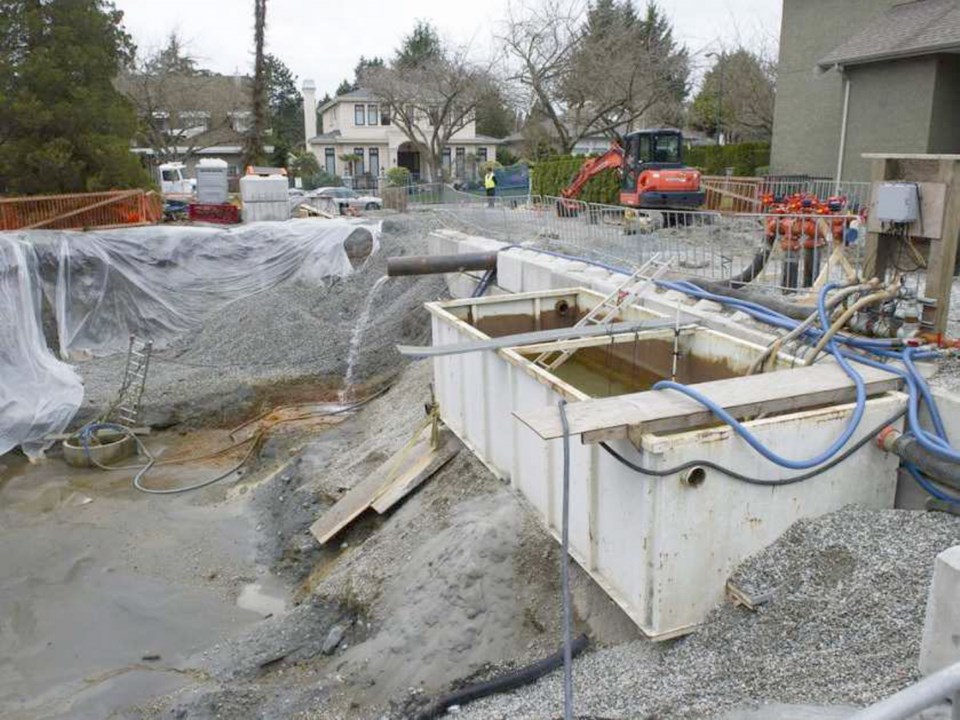VANCOUVER — More than one billion litres of water have spurted from a $3-million residential lot on the west side of Vancouver since inexperienced drillers breached an aquifer under the site, then fled the country 15 months ago.
Qualified crews took over the site a few days after the breach and after months of planning and preparation (and pauses for government approvals), they could be just a few steps away from sealing the hole.
Completion of the project will come as relief to nearby residents, whose neighbourhood is now dotted with more than 150 sensors to monitor ground movement amid an ongoing fear that a sinkhole could develop around the breach and under homes.
But the closure process is complicated and carries its own set of hazards and concerns, as Thierry Carriou, an engineer and expert hydrologist at B.C. Groundwater Consulting Services, explained in a recent interview.
“It’s complex if you want to do it right. Lots of people have tried to close off flowing wells by bringing up a cement truck and dumping the cement in. … Your chance of success on that is probably less than five per cent,” said Carriou, who has been contracted to fix the problem.
Rather than taking the cement-truck approach, Carriou mapped out a seven-step closure process. Crews are still on step two, after having previously drilled relief wells that, when they’re pumping water, can lower the water table by about 10 metres at the drill site. That allowed workers to start digging.
Carriou likened the ground to a stack of pancakes, each with a different density and thickness. At 7084 Beechwood St., the first pancake is soft and goes down about four metres. Under that is a dense pancake of glacial till that, so long as it is undisturbed, confines the pressurized aquifer.
After digging a wide hole right to the bottom of the first pancake, crews started to build a massive, concrete well head that, when finished, will be 2.4 metres in diameter, more than four metres deep and surrounded by impermeable clay. This step should be finished early this month and will seal the upper pancake.
Then, if the company passes another round of government approval, Carriou will try to seal the lower pancake as well. What that entails is mounting another drill atop the new well head then boring into the ground all over again to replace the well casing that the initial drillers erroneously pulled up after they struck the aquifer. Then it will be time to bring in cement. With that comes another layer of risk.
“Cementing can be hazardous and it can cause issues outside of the well,” Carriou said.
Ideally, the hole will take concrete without pressure. But if the concrete has to be forced in, it raises the risk that the ground will start to fracture. For a sense of how delicate the job is, even pumping water up from the aquifer causes the ground to shift up and down.
There’s another worry, and that’s that some of the concrete sent down the new casing will flow through the aquifer and into the relief wells.
But if everything goes smoothly, crews will be able to gradually displace the groundwater with concrete, lifting the casing as they go, and leave behind a fully sealed borehole that needs no further attention.
“Because we’re in a residential neighbourhood, we want to make sure that once we’re done, the neighbourhood and the city don’t have to worry about this anymore,” Carriou said.
As of late summer, the city had spent $2.7 million dealing with the breached aquifer. Staff plan to use legal mechanisms to recoup the costs from the property owner.



